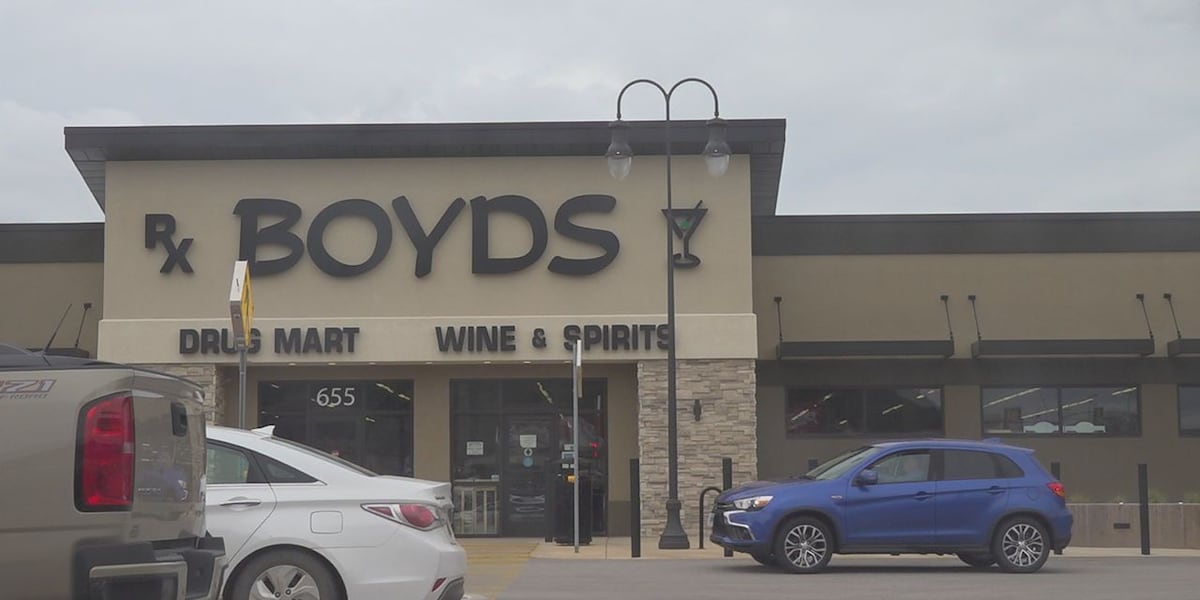South Dakota
911 service provider Lumen blames outage on installation of light pole

The outage of 911 systems in several states Wednesday evening was caused by the installation of a light pole, according to Lumen, a company that supports some of those systems.
“On April 17, some customers in Nevada, South Dakota, and Nebraska experienced an outage due to a third-party company installing a light pole – unrelated to our services,” Lumen Global Issues Director Mark Molzen told CNN Thursday morning.
An outage was also reported in a fourth state, Texas. Molzen said Lumen – a networking company that provides enhanced 911 services to local communities in multiple states – does not provide 911 services in Texas.
The outage lasted less than three hours, according to Molzen, who said the company “worked hard to fix it as quickly as possible.”
“We apologize for the inconvenience and appreciate our customers’ patience and understanding,” Molzen said.
Service had been largely restored by Thursday morning, hours after agencies in the four states announced outages in multiple cities, with some urging residents in need of assistance to either text 911 or call using a landline. The outages had been largely addressed within hours, however, including in cities like Sioux Falls and Rapid City, South Dakota, and Las Vegas.
As of Thursday morning, some agencies had yet to confirm service had been restored, including those in Del Rio, Texas, and Douglas and Chase counties, Nebraska – the former of which encompasses Omaha.
The Federal Communications Commission confirmed on X that it was “aware of reports of 911-related outages and we are currently investigating.”
Agencies point to texts, landlines as workarounds during outages
The outages surfaced Wednesday evening, as agencies like the Las Vegas Metropolitan Police Department announced disruptions hindering their ability to communicate with residents, who were urged to text 911 instead of calling.
While the department initially said it had no timeline for restoring service, the interruption had been resolved within about two hours.
According to its post on X, authorities were able to see mobile numbers that had contacted 911, allowing them to reach back out to callers to provide assistance. During the outage, calls made from landlines during the outage were not working, nor were calls to its non-emergency line.
The South Dakota Department of Public Safety also announced service had been restored for the South Dakota 911 system after earlier saying in a statement it was “aware of a 911 service interruption throughout the state.”
Similarly, the department said during the outage that texting 911 was still “operating in most locations,” otherwise residents in need could contact emergency services using non-emergency lines.
Officials in Sioux Falls and Rapid City also reported the resumption of 911 services on their respective Facebook pages. The Rapid City Police Department urged residents to “only utilize 911 services only if an emergency situation exists.” The City of Sioux Falls said residents could again call or text 911 in case of emergencies.
In Texas, the City of Del Rio Police Department said it was aware of an outage with a “major cellular carrier” affecting residents’ ability to reach 911, emphasizing “the issue is with the carrier, and not the City of Del Rio systems.” Residents were told to contact 911 using a landline “or another carrier” if unable to reach emergency services on their cell phones.
Portions of Nebraska, including Chase County, reported outages as well. Officials in the state’s capital city of Lincoln, however, told CNN their 911 system was operational and not affected.
“911 is down across the State of Nebraska again for all cellular carriers except T-Mobile,” Chase County said in a Facebook post. “Landlines can still get through to 911.”
“Dial 911 on a mobile device, and we will be able to see your number and will call you back right away. 911 calls from landlines are NOT working at the moment,” the department initially wrote on Facebook. “There is no estimate for service restoration.”
Outages highlight potential vulnerabilities
While Lumen’s statement indicated the cause of the outage was not malicious, the service interruptions raise questions about the fragility of the nation’s 911 infrastructure, particularly in light of a Department of Homeland Security assessment last week that found emergency services are vulnerable to cyberattacks – and that the exploitation of personal data stolen during those ransomware attacks “poses a persistent criminal threat to victims.”
According to the assessment, such attacks have disrupted 911 networks and local police departments. It also highlighted that emergency service systems are often “interconnected,” which makes it more difficult to protect them from cyberattacks.
Once ransomware actors have hacked systems, the assessment also found they then “routinely leak, sell, or further exploit a victim’s data” for criminals to use for other crimes.
Bulletins like the DHS assessment are distributed to local law enforcement and companies that run critical infrastructure.
The CNN Wire™ & © 2023 Cable News Network, Inc., a Warner Bros. Discovery Company. All rights reserved.

South Dakota
Mitt Romney insists he’s no dog killer, unlike South Dakota Gov. Kristi Noem

Mitt Romney says he resents being compared to South Dakota Gov. Kristi Noem after she bragged about killing a pet dog over its troublesome behavior.
The former Republican presidential standard-bearer insisted that he did nothing nearly so cruel as Noem by strapping a pet dog to the roof of his car, a much-mocked episode from his 2012 White House campaign.
“I didn’t shoot my dog,” Romney told HuffPost Tuesday. “I loved my dog, and my dog loved me.”
He called Noem’s story about shooting and killing the pooch “a tale of slaughter.”
Noem, a right-wing Republican hardliner who was once thought to be on former President Trump’s vice presidential short list, drew withering criticism from across the political spectrum with her bizarre account in a memoir that emerged last week.
Apparently hoping to burnish her tough lady image, Noem recounted a 20-year old episode in which she says she killed the dog named Cricket because it didn’t hunt properly and displayed other problematic behavior.
““I hated that dog,” wrote Noem, adding it was “less than worthless.” She also killed a goat that she derided as smelly and obnoxious.
Romney own doggie debacle came in 1983 when as a young father he packed up the family Chevrolet station wagon for a summer trip from Boston to the Canadian Atlantic seaboard.
With no room inside for the pet pointer, Seamus, Romney attached a dog carrier to the roof rack and created a makeshift shield to protect him from the elements.
The story was recounted by Romney’s son during his GOP presidential primary campaign as a way of humanizing the candidate who battles perceptions that he is wealthy and aloof.
But it backfired as political rivals pounced on the damaging claim that Romney strapped the pooch to the car’s roof.
South Dakota
How SDSU put South Dakota at forefront of precision ag revolution

BROOKINGS, S.D. — South Dakota State University’s new precision agriculture program has had success at persuading in-state and some other Midwestern farmers to use more technology in their operations, while other states lag in their adoption of it.
SDSU was the first university in the country to create a
program that teaches and helps farmers use precision ag
, the science of new technologies and traditional methods that make operations more efficient to increase crop yields while reducing environmental impacts. For example, the use of global positioning satellites helps target chemicals and fertilizers where they’re needed most.
Ali Mirzakhani Nafchi, an assistant professor at the precision ag center, said the school is working to increase usage through education and research to make the technology more practical for farmers.
“I am very, very optimistic it is going to work. And we will see the changes not only in South Dakota, in the nation and in the world,” he said.
South Dakota has one of the highest percentages of usage, with 53% of farmers using precision ag technology,
according to a study from the U.S. Department of Agriculture.
Other Midwest states where more than half the farmers also use precision ag include North Dakota, Iowa, Illinois and Nebraska,
according to a study done by the SDSU Ness School of Management and Economics
.
Nationally, just 27% of farmers use precision ag practices to manage crops or livestock, the Ness study found.
Precision ag benefits, challenges to adoption
The most widely adopted precision ag technologies include auto-steering in machinery and guidance or “georeferencing technology,” the process of taking digital images.
Satellite imagery is the next most widely adopted technology, with nearly 60% of farmers having used it, according to the Ness study.
The technology typically increases crop production by 4% and fertilizer placement efficiency by 7%, according to a study done by the
Association of Equipment Manufacturers
. Precision ag also reduces herbicide and pesticide, fossil fuel and water use.
Despite the benefits of optimizing returns and yields, factors such as cost and lack of general knowledge about precision ag have prevented most farmers from using the tech products as widely as originally hoped.
Bart Pfankuch / South Dakota News Watch
Anna Karels, a student at the precision ag center, said it takes money to get started but will save money in the long term.
“I think it’s hard for a lot of farmers to (understand) that, yes, it (might increase) my costs … upfront, but it pays off over a certain number of years,” she said.
Nafchi said lowering the initial rate will incentivize more farmers to use the technology.
“Initial costs for variable rate application is too high,” he said. “So imagine if we get help. Somehow maybe make it less inexpensive, or lower the initial costs, or just go and do an incentive, investment for them, and ask them to just try it. And then they see the return on their investment is really good. I’m very optimistic they will use it.”
If the initial costs are unattainable for some farmers, there are programs in place to help operations use this technology. USDA and the National Science Foundation have provided almost $200 million for precision ag research and developmental funding from 2017 to 2021,
according to the U.S. Government Accountability Office
.
Another factor for the low adoption rates is the lack of knowledge about the new technology. But there are options for South Dakota farmers to learn more.
“Dealerships like John Deere, I know they have a lot of clinics that they put on and stuff like that. (The school) does a lot of that to where they go out and show farmers, ‘OK, this is what this does and how it can help you and benefit you’ and kind of like go through and show them how to use it,” Karels said.
The Raven Precision Agriculture Center
The
Raven Precision Agriculture Center
was built for students in the major to learn about precision ag in interactive ways.
The building features rooms full of equipment and precision ag products students use to learn through hands-on technology. The $46.2 million building opened in August 2021, making it the first precision ag program in the nation.
Kasiviswanathan Muthukumarappan
, endowed department head and professor at the center, said the department is proud of being the first but is now changing its curriculum to become the best program in the nation.
“We would like to grow our precision ag program to the next level, and elevate the experiences for our students,” he said.
One change is to add more specialized majors to collect more data on precision ag.
“Previously, we had one recipe for all the students who are enrolled in (the) precision ag program, meaning that we combine agronomy and technologies together and make it one robust program,” Muthukumarappan said. “Now, we are making it more user-friendly. And we have three different tracks. One is for technology track. The other one is for agronomy track. And the other one is for data track, electronic strikers.”
The program, with 66 students currently, is trying to raise enrollment rates by 20% in the next five years to make this goal attainable. SDSU’s mission is to simplify this technology and make it more practical for farmers, Nafchi said.
This story was produced by South Dakota News Watch, an independent, nonprofit news organization. Contact Greta Goede at greta.goede@sdnewswatch.org.
South Dakota
The history of Alligators in South Dakota

RAPID CITY, S.D. (KOTA) – Alligators in South Dakota. Of course, there aren’t any gators roaming around in a nearby lake.
However, alligators did once call the state home.
Believe it or not, alligators did roam the lands of what is now South Dakota millions of years ago.
Interim Director of Museum of Geology Darrin Pagnac says the earliest records of alligators in South Dakota come from the late Jurassic Period.
“Our earliest record here in the Black Hills is from about 150 million years ago from the Morrison Formation. Morrison Formation is where Dinosaur National Monument is. So, we get a lot of long neck dinosaurs and allosaurs and that sort of thing and crocodilians are very common,” says Pagnac.
Pagnac added that it is common to find alligator fossils from the late Cretaceous Period in the northwestern part of the state. He went on to say that although alligators survived the dinosaur extinction 66 million years ago, the reptiles would later go extinct in the lands of what is South Dakota today.
“About 38 to 35 million years ago, that’s probably about the time they went extinct. And their extinction coincides with uh drying and cooling trend that we see throughout South Dakota. We lost these tropical swamps and forests and things really changed to a more temperate kind of seasonal environment,” says Pagnac.
Reptile Gardens General Curator Terry Phillip says historically crocodilians have been one of the most successful groups of animals in the world and they have undergone very few changes in appearance in the last 200 million years.
“Anytime you have an animal that has a fossil record that goes back that far, with very few changes, size being the biggest change that you’re going to see. They just got a little smaller. But, when you see an animal that successful, it just shows the design concept was perfect to begin with,” says Phillip.
Since alligators have been non-existent in South Dakota for millions of years, Earl Brockelsby opened Reptile Gardens in 1937 as a way to reintroduce them to the state.
See a spelling or grammatical error in our story? Please click here to report it.
Do you have a photo or video of a breaking news story? Send it to us here with a brief description.
Copyright 2024 KOTA. All rights reserved.
-

 Education1 week ago
Education1 week agoVideo: Dozens of Yale Students Arrested as Campus Protests Spread
-

 World6 days ago
World6 days agoHaiti Prime Minister Ariel Henry resigns, transitional council takes power
-

 News7 days ago
News7 days agoLarry Webb’s deathbed confession solves 2000 cold case murder of Susan and Natasha Carter, 10, whose remains were found hours after he died
-

 Politics1 week ago
Politics1 week agoFetterman hammers 'a–hole' anti-Israel protesters, slams own party for response to Iranian attack: 'Crazy'
-

 World1 week ago
World1 week agoPeriod poverty still a problem within the EU despite tax breaks
-

 World7 days ago
World7 days agoUS secretly sent long-range ATACMS weapons to Ukraine
-

 News6 days ago
News6 days agoFirst cargo ship passes through new channel since Baltimore bridge collapse
-

 World1 week ago
World1 week agoTurkey’s Erdogan meets Iraq PM for talks on water, security and trade



















